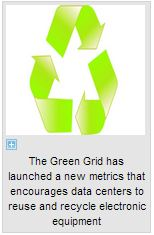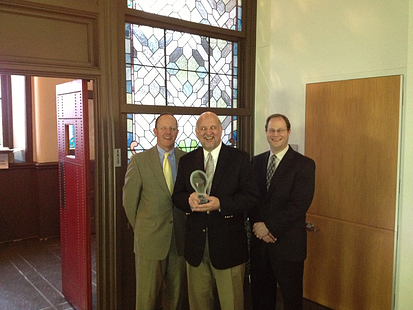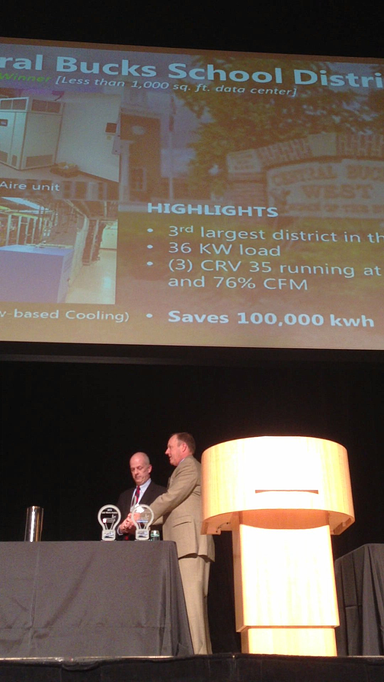Critical Environments: Power, Cooling, and Infrastructure
For HVAC Emergencies: 1-866-DVL-HVAC | For UPS Emergencies: 1-800-LIEBERT
For Generator Emergencies in CO, NM, or WY:303-953-3128
For HVAC Emergencies, please call 1-866-DVL-HVAC
For HVAC Emergencies: 1-866-DVL-HVAC | For UPS Emergencies: 1-800-LIEBERT
For Generator Emergencies in CO, NM, or WY:303-953-3128
For HVAC Emergencies, please call 1-866-DVL-HVAC
by Mike Rinaldi on 5/17/13 10:28 AM
Topics: Emerson Network Power, data center infrastructure, reduce cost, Data Center, Green IT, data center design, data center energy, data center infrastructure management, robust data center, efficient data center, reduce downtime, Green Technology
by Mike Rinaldi on 3/22/13 9:58 AM
Jack Pouchet is vice president of business development and director of energy initiatives for Emerson Network Power.
Data center energy efficiency has been an increasing focus since the issue emerged in 2007. We believe dramatic energy savings can be realized without heroic measures that compromise availability. The key is to focus on the core IT systems, rather than just support systems. This is based on the cascade effect, which shows that focusing first on saving energy at the server-component level will drive energy savings throughout the data center.
In 2007, Emerson Network Power introduced a free, vendor-neutral roadmap to saving 50 percent of your data center energy use. While many of the roadmaps core principals - such as the cascade effect - still hold true, the industry has evolved at rapid rate over the past five years. The need to maintain or to build highly available data centers remains the same, but IT and critical infrastructure technologies have changed, creating new opportunities to optimize efficiency and capacity strategies.
As a result, weve updated the approach to incorporate advances in technology and new best practices that have emerged since 2007.
Ten updated strategies serve as a roadmap. In total, they have the potential to reduce a data centers energy use by up to 74 percent in a typical 5,000 square-foot data center with a PUE of 1.9 and energy consumption of 1.5 MW.
This new process demonstrates the potential that still exists to optimize the data center. The introduction of a new generation of management systems that provide greater visibility and control of data center systems, and a continued emphasis on efficiency, serve as proof that there is no time like the present for the industry to begin taking significant actions to reduce the overall energy consumption of data centers.
Organizations need a clear roadmap for driving dramatic reductions in energy consumption without jeopardizing data center performance. But just how far can a data center efficiency approach drive you? Take a look at how far each of 10 energy-saving steps could take you via electric car. The cumulative result can literally drive you around the world.
To see how much each strategy can save your data center visit the Cascading Savings Calculator. This online tool lets you explore the impact of each strategy by entering information that is specific to your data center, such as the load and facility PUE.

Topics: Emerson Network Power, data center infrastructure, Data Center, Green IT, data center energy, data center infrastructure management, CRV
by Mike Rinaldi on 3/20/13 11:05 AM
Topics: Emerson Network Power, data center infrastructure, Data Center, Green IT, data center energy, data center infrastructure management, CRV
by Mike Rinaldi on 3/19/13 12:33 PM
11 March 2013 by DatacenterDynamics FOCUS
The Green Grid has launched a new metric to help data center operators and organizations measure how electronic equipment is managed once it reaches end-of-current-use.
The Electronics Disposal Efficiency (EDE) metric is the first universal metric launched by The Green Grid to help end-users of information and communications technologies (ICT) measure their success in the responsible management of outdated equipment.
EDE is a simple metric that helps organizations calculate and measure their progress in improving equipment disposal processes over time, The Green Grid said.
Discarded Electronics and Electrical Equipment (EEE) entering the waste stream is known globally as e-waste or Waste Electronics and Electrical Equipment (WEEE). Examples of WEEE include computers, mobile devices, home entertainment products, toys, and even goods such as refrigerators and stoves.
The definition and monitoring of WEEE worldwide has evolved over the last decade, which has prompted The Green Grid to identify the need to combine the expertise of other organizations who define standards and requirements for e-waste management with its own members knowledge and understanding of the e-waste management challenges facing the ICT community.
The Green Grid said the result is the creation of a metric that quantifies how well a corporate consumer of ICT EEE responsibly manages e-waste.
The Green Grid isnt trying to redefine any domain-specific terminology in the WEEE arena, Kathrin Winkler, EMC representative and Board Member of The Green Grid, said.
>> Read more

DVL Shines The Spotlight On Data Centers For Using Less Watts

Topics: Emerson Network Power, reduce cost, Data Center, Green IT, data center design, data center energy, data center infrastructure management, PUE, Containment, Green Technology, energy, Energy Star, cloud strategy
by Mike Rinaldi on 3/13/13 9:57 AM

Bristol, PA March 12, 2013 DVL Group, a provider of data center infrastructure management solutions, partnered with 12 data centers to help them save at least 1,000,000 watts of electrical energy.
DVL has officially announced the three organizations that saved the most watts, which earns them the prestigious Less Watts Award.
The winner in the first category, with data centers less than 1,000 sq. ft., is Central Bucks School District. Temple University took the second category, made up of data centers from 1,000 to 5,000 sq. ft. The winner of the third category, encompassing data centers greater than 5,000 sq. ft., is SunGard.
In addition to honoring the winners with the Less Watts Award, DVL is also making donations of $1,000 in each winners name to the Delaware Valley Green Building Council (DVGBC).
The Less Watts competition has been a blast, says DVL Chief Executive Officer Mike Beck. Everyone who participated was incredibly cooperative, enthusiastic and just really great to work with. We couldnt be happier to present the award to these outstanding organizations and look forward to helping others save energy with our Less Watts program.
The Less Watts Award ceremony, taking place today, is the official kickoff for the annual Greenbuild Conference. This annual conference, hosted by DVGBC this year in Philadelphia from November 20-22, will feature speakers, networking opportunities, industry showcases, LEED workshops and tours of Philadelphias green buildings.
To learn more about how DVL helps its customers use Less Watts with quality solutions from industry leader Liebert to build dynamic, energy efficient data centers, visit www.dvlnet.com. For more information on GreenBuild 2013 in Philadelphia, head to http://dvgbc.org/greenbuild-2013.

Learn more about the Less Watts program by clicking below.
Topics: data center infrastructure, Data Center, Green IT, data center design, data center energy, data center infrastructure management, Green Technology, Energy Star
Philadelphia | Albuquerque | Boise | Denver | Harrisburg | Salt Lake City
Headquarters: 115 Sinclair Rd., Bristol, PA 19007
1-215-785-5950